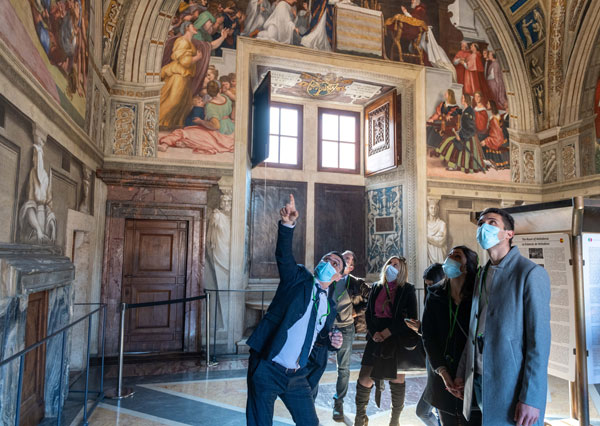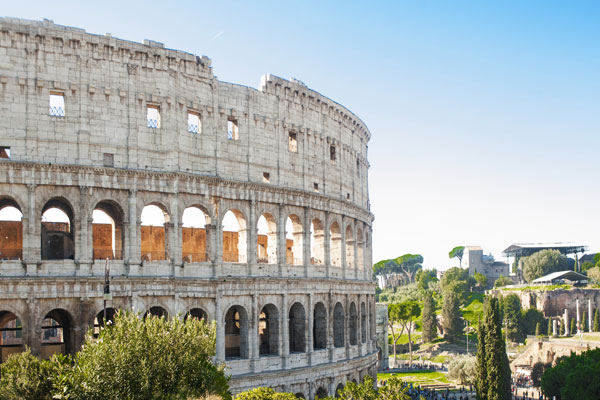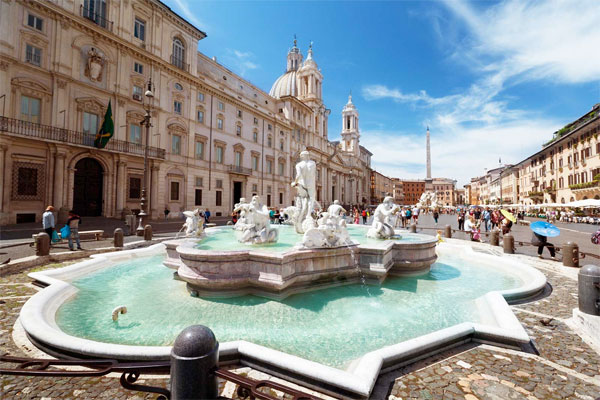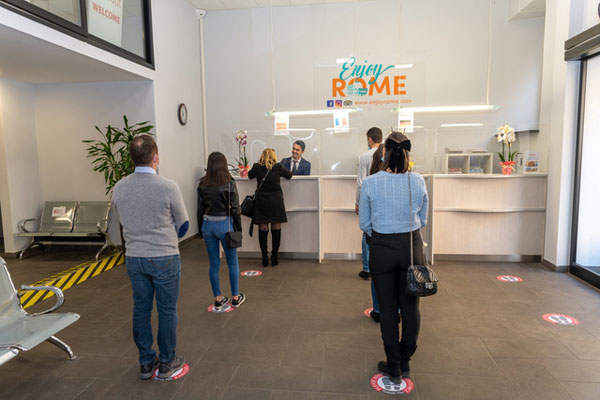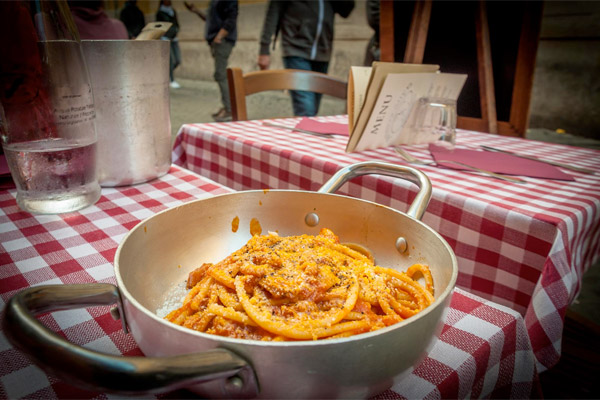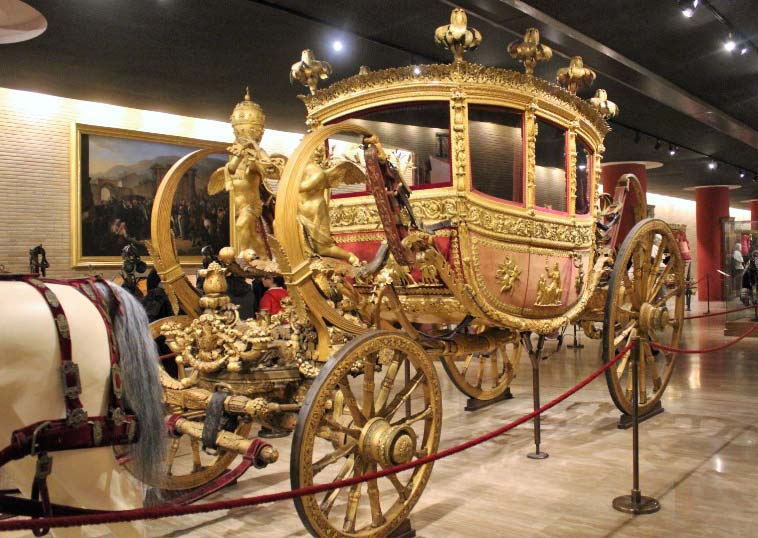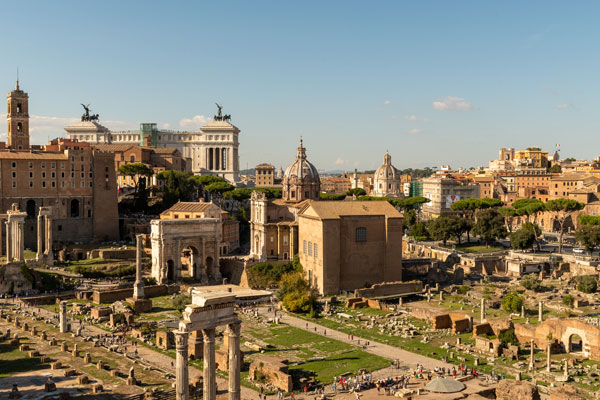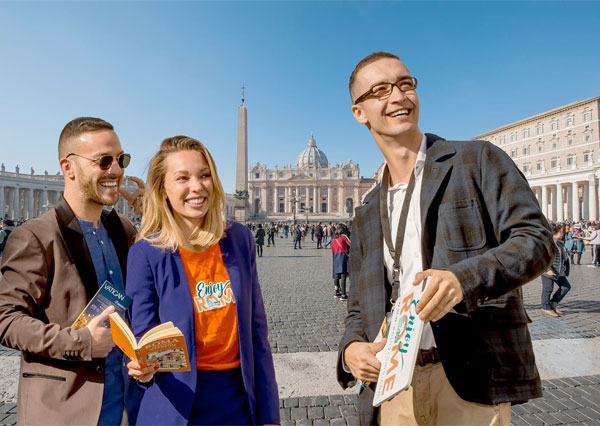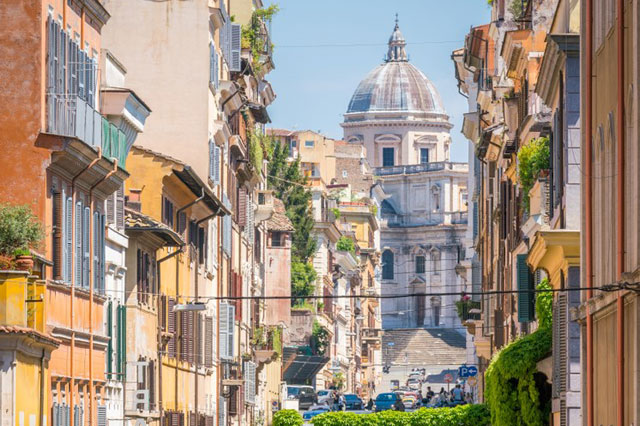Vatican Museums – The Raphael Rooms
The Vatican Museums are one of the world’s largest museums featuring works of art, sculptures, and other precious masterpieces collected by different Popes and the Catholic Church over the centuries. It is estimated that there are in the region of over 70,000 pieces of art in total, with 20,000 being displayed within the museums.
It was Pope Julius II who founded the Vatican Museums in the 16th Century. With so many exhibitions and artworks to feature, this is the first in a series of blogs focusing on some of the highlights of the Vatican Museums.
Overview of the Raphael Rooms (Stanze di Raffaello)
The Raphael Rooms form part of the papal apartments in the Apostolic Palace and were once the official residence of Julius II della Rovere.
It was Julius II who commissioned the leading Italian High Renaissance artist, Raphael, to decorate the four rooms. Together with his students, between 1508 and 1524, they created the incredible frescoes that we still admire today.
The four rooms are: the Hall of Constantine (Sala di Costantino), the Room of Heliodorus (Stanza di Eliodoro), the Room of the Signature (Stanza della Signature) and the Room of the Fire in the Borgo (Stanza dell’Incendio del Borgo).
The Hall of Constantine
This is the largest room and was named after Constantine, the first Roman Emperor (306-337 A.D.). The Hall of Constantine hosted receptions and important ceremonies. Constantine was the first Roman Emperor to recognize the Christian faith. As Raphael died before the frescoes were finalized, his assistants completed the decoration, painting the frescoes in 1517 based on Raphael’s designs.
The designs are said to represent four significant times in Constantine’s life. They are the Vision of the Cross, the Battle of Constantine against Maxentius, the Donation of Rome to Pope Sylvester, and the Baptism of Constantine.
Room of Heliodorus
Decorated between 1511 and 1514, the Room of Heliodorus was intended for the Pope’s audience. The designs in this room document various historical events, from the Old Testament to medieval history. The four paintings in this room are the Expulsion of Heliodorus from the Temple, the Mass at Bolsena, the Meeting of Pope Leo I and Attila, and the Deliverance of Saint Peter from Prison.
Room of the Signatura
This room was the private office and study of Pope Julius II (pontiff from 1503 to 1513). Raphael’s frescoes adorn the walls and were painted between 1508 and 1511. This era was the start of the High Renaissance. The themes of the pope’s library collection are depicted in the designs with a focus on theology, jurisprudence, philosophy, and the poetic arts. It was in this room that the most important papal documents were signed and sealed.
The Fire in the Borgo
When Pope Julius II died, only two of the rooms had been painted, so his successor Pope Leo X (pontiff between 1513-1521) continued with the plan of work, which was completed between 1514 and 1517. This was the music room for the Pope. The designs represent events from the lives of Pope Leo III and IV, with paintings depicting the Coronation of Charlemagne, the Oath of Leo III, The Fire in the Borgo, and the Battle of Ostia. The Fire in the Borgo portrays the fire in 847 in the Borgo in Rome.
There is so much to know about these famous frescoes and the history of these rooms. The best way to find out is to book an Enjoy Rome small group tour and let one of our expert Vatican guides explain each fresco and its significance.
Our guides have an incredible knowledge about the Vatican and the different exhibitions. To find out more about our Vatican tours and tickets and to book, check out our website for full details

